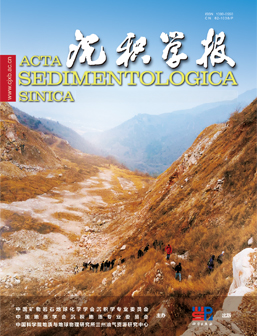Carbon-Oxygen Isotopic Composition, Paleoenvironment and Organic Matter Enrichment Mechanism of Carbonate Rocks: a Case Study of the Second Member of Lucaogou Formation, Malang Sag, Santanghu Basin
doi: 10.14027/j.issn.1000-0550.2025.010
- Received Date: 2024-09-29
- Available Online: 2025-04-15
-
Key words:
- Santanghu Basin /
- Malang Depression /
- member 2 of Lucaogou formation /
- carbon-oxygen isotopes /
- paleoenvironment /
- Organic matter enrichment
Abstract: [Objective] The second member of the Lucaogou Formation (Lu2) of the Middle Permian in the Malang depression is the main source of lacustrine carbonate shale oil in the Santanghu Basin, however, the study on the coupling relationship between carbon-oxygen isotope composition and paleoenvironmental characteristics and organic matter enrichment is relatively weak. [Methods] In order to clarify the paleoenvironmental characteristics and the enrichment mechanism of organic matter, total organic carbon content, carbon-oxygen isotope and micronutrient of carbonate samples were analyzed in this study. [Results and Discussions] The results show that:①the carbon isotopes of the carbonate rocks in the second member of Lu Formation are all positive, and the oxygen isotopes are all negative, from bottom to top, the carbon-oxygen isotopes of Lu2 member show the characteristics of high-low-high, and have obvious response relationship with sedimentary cycle, paleoenvironment and paleoproductivity.②The lower part of the middle dessert is a deep water environment with drought, brackish water and strong reduction, and the paleoproductivity is low. The upper part is a deep water environment with semi-arid, brackish water and weak reduction, the paleoproductivity is high in arid, salt water, weak reduction-weak oxidation semi-deep water environment. [Conclusions] Based on the analysis of total organic carbon content and paleoenvironmental conditions, it is considered that the accumulation of organic matter is mainly controlled by paleoproductivity, and the reduction environment with high salinity contributes to the preservation of organic matter, the high-quality source rocks are developed in the upper and upper cycles of the middle sweet spot, while the lower cycles of the middle sweet spot are relatively poor.
| Citation: | Carbon-Oxygen Isotopic Composition, Paleoenvironment and Organic Matter Enrichment Mechanism of Carbonate Rocks: a Case Study of the Second Member of Lucaogou Formation, Malang Sag, Santanghu Basin[J]. Acta Sedimentologica Sinica. doi: 10.14027/j.issn.1000-0550.2025.010 |






 DownLoad:
DownLoad: